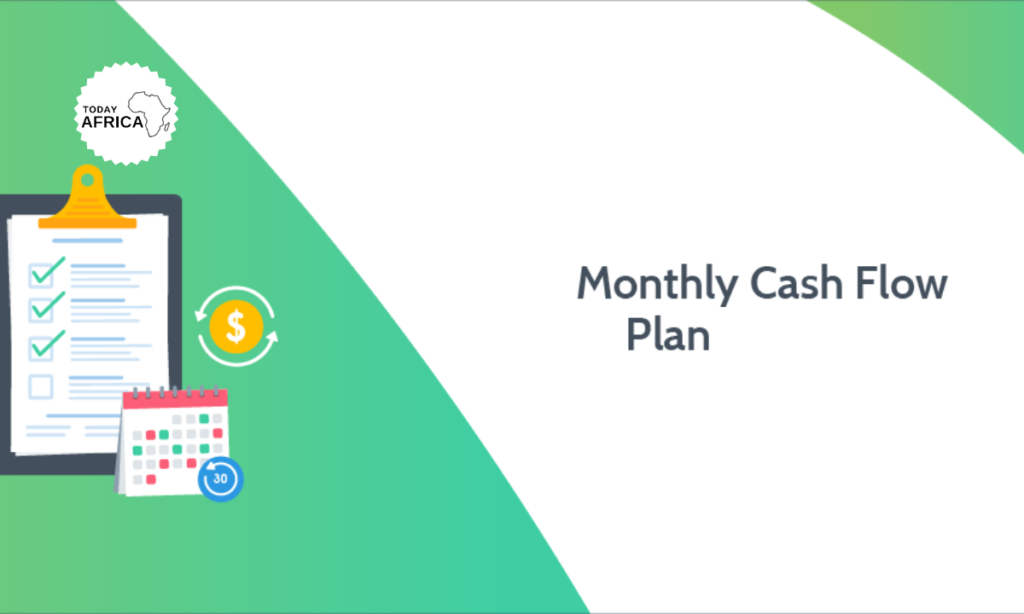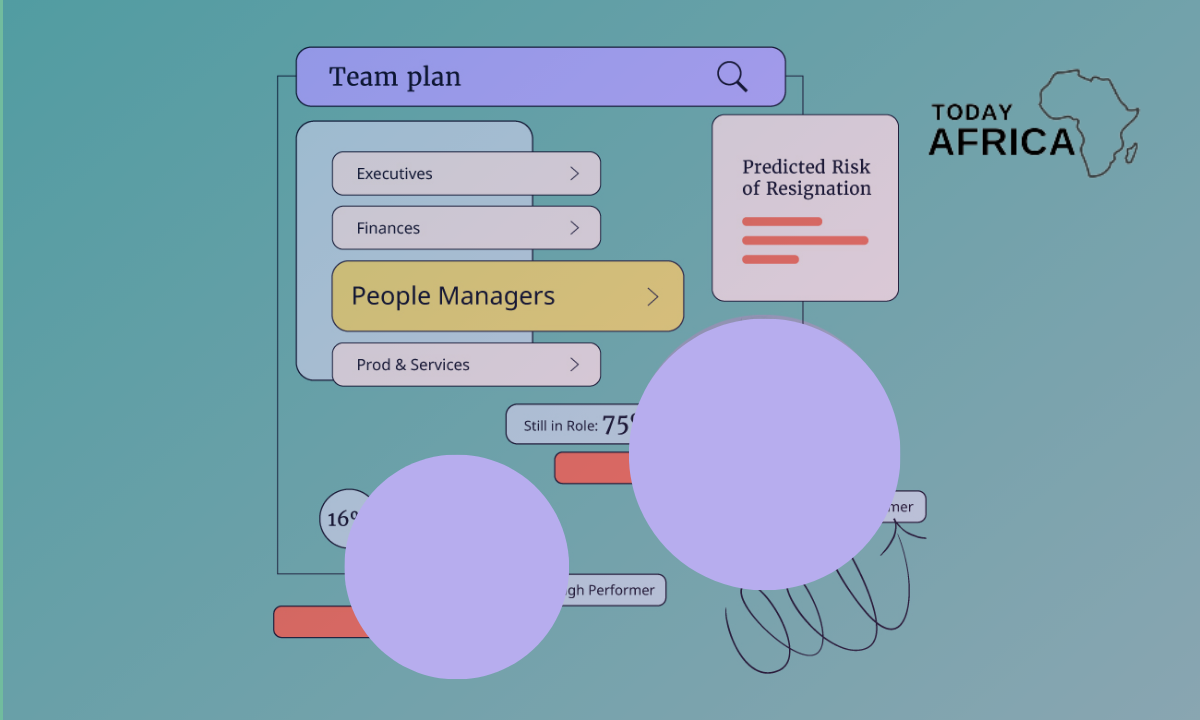Ever feel like your money just disappears each month? You’re not alone. Many people struggle to keep track of their income and expenses, leading to financial stress and a lack of control.
This is where a monthly cash flow plan comes in. Think of it as a roadmap for your money, showing you exactly where it’s coming from and going. By creating and sticking to a plan, you can:
- Gain control over your finances: Knowing where your money goes empowers you to make informed spending decisions.
- Avoid debt: A cash flow plan helps you identify potential shortfalls and adjust your spending accordingly.
- Achieve financial goals: By allocating funds towards savings and investments, your plan paves the way for a secure future.
In this blog post, we’ll explore the essentials of a monthly cash flow plan and provide practical steps to create one that works for you.
What is Cash Flow?
Cash flow refers to the movement of money in and out of your personal finances. It’s the difference between your income (money coming in) and your expenses (money going out). Positive cash flow means you have more income than expenses, while negative cash flow indicates that your expenses exceed your income.
Importance of Cash Flow Management
Effective cash flow management is crucial for several reasons:
- Financial stability: Ensures that you can meet your financial obligations and avoid debt.
- Savings and investments: Helps you allocate funds for savings and investments, which are essential for long-term financial health.
- Goal achievement: Allows you to plan and achieve financial goals, such as buying a home, traveling, or retirement.
- Peace of mind: Reduces financial stress by providing a clear picture of your financial situation.
Steps to Create a Monthly Cash Flow Plan

Creating a monthly cash flow plan involves several key steps. Let’s break them down:
Step 1: Assess your income
The first step is to determine your total monthly income. This includes:
- Salary/wages: Your regular paycheck from employment.
- Freelance/side gigs: Additional income from side jobs or freelance work.
- Investments: Income from investments, such as dividends or interest.
- Other sources: Any other sources of income, such as rental income, alimony, or government benefits.
Read Also: Social Media Integration Services for Your Business
Step 2: List your expenses
Next, list all your monthly expenses. These can be categorized into:
- Fixed expenses: Regular, recurring expenses that don’t change much from month to month. Examples include rent/mortgage, utilities, insurance, and loan payments.
- Variable expenses: Expenses that fluctuate each month, such as groceries, dining out, entertainment, and transportation.
- Discretionary expenses: Non-essential expenses that you can control, like hobbies, subscriptions, and luxury items.
Step 3: Categorize your expenses
Categorizing your expenses helps you understand where your money goes and identify areas for improvement. Common categories include:
- Housing: Rent/mortgage, utilities, property taxes, maintenance.
- Transportation: Car payments, fuel, public transit, maintenance.
- Food: Groceries, dining out, snacks.
- Insurance: Health, auto, home, life insurance.
- Debt repayment: Credit card payments, loan payments.
- Savings and investments: Retirement accounts, emergency fund, investment accounts.
- Entertainment and leisure: Subscriptions, hobbies, vacations.
- Miscellaneous: Gifts, donations, other irregular expenses.
Step 4: Analyze your cash flow
Subtract your total expenses from your total income to determine your cash flow. This can result in:
- Positive cash flow: If your income exceeds your expenses, you have extra money to save, invest, or spend on discretionary items.
- Negative cash flow: If your expenses exceed your income, you’ll need to make adjustments to avoid debt and financial strain.
Step 5: Make adjustments
Once you’ve analyzed your cash flow and identified any discrepancies or areas for improvement, it’s time to make adjustments. These adjustments will help ensure your cash flow is balanced and aligned with your financial goals.
Reducing expenses
Look closely at your variable and discretionary expenses. Identify areas where you can cut back without significantly impacting your lifestyle. Common areas for reduction include:
- Dining out: Limit eating out and focus more on home-cooked meals.
- Entertainment: Opt for free or low-cost entertainment options.
- Subscriptions: Cancel any subscriptions you don’t use or need.
- Utilities: Implement energy-saving measures to reduce utility bills.
Increasing income
Boosting your income can significantly improve your cash flow. Consider these options:
- Freelancing: Use your skills to take on freelance projects.
- Part-time Work: Consider a part-time job if your schedule allows.
- Selling Unused Items: Sell items you no longer need on platforms like eBay or Craigslist.
- Investments: Explore opportunities for passive income through investments.
Reallocating funds
If certain areas of your budget are consistently underfunded, reallocate your funds. For example:
- Debt repayment: Allocate more funds towards paying off high-interest debt.
- Emergency fund: Increase your contributions to build a robust emergency fund.
- Savings: Direct more money into savings accounts or investment portfolios.
Step 6: Implement and monitor
With your adjustments in place, implement your new cash flow plan and monitor it regularly to ensure it’s working. Here’s how:
Tracking your finances
Use tools like spreadsheets, budgeting apps, or financial software to track your income and expenses. Regular tracking helps you stay on top of your financial situation and make timely adjustments.
Regular reviews
Set aside time each month to review your cash flow plan. Compare your actual income and expenses to your plan, and identify any discrepancies. Use this review to make any necessary adjustments.
Flexibility
Be flexible and willing to adapt your cash flow plan as needed. Life circumstances change, and your cash flow plan should reflect those changes. Adjust your plan to accommodate new expenses, changes in income, or evolving financial goals.
Tips for Effective Cash Flow Management
1. Prioritize saving
Make saving a priority by setting aside a portion of your income each month. Aim to save at least 20% of your income, divided between an emergency fund, retirement accounts, and other savings goals. Automate your savings to ensure consistency.
2. Reduce unnecessary spending
Identify areas where you can cut back on spending. This might include:
- Eating out: Cook more meals at home to save on dining expenses.
- Subscriptions: Cancel unused or unnecessary subscriptions.
- Impulse purchases: Avoid impulse buying by sticking to a shopping list.
3. Plan for irregular expenses
Irregular expenses, such as car repairs, medical bills, or annual insurance premiums, can disrupt your cash flow. Plan for these by setting aside a portion of your income each month into a sinking fund dedicated to covering these costs.
4. Use technology
Leverage technology to manage your finances more efficiently. Budgeting apps, financial planning software, and online banking tools can help you track your income and expenses, set financial goals, and monitor your progress.
See Also: Monthly Cash Flow Plan: How to Create One For Your Business
Common Cash Flow Mistakes to Avoid

Avoiding common cash flow mistakes can help you maintain financial stability and achieve your goals. Here are some pitfalls to watch out for:
1. Ignoring irregular expenses
Failing to plan for irregular expenses can lead to financial stress and debt. Ensure you set aside funds each month to cover these occasional costs.
2. Overestimating income
Be realistic about your income to avoid overspending and creating a false sense of financial security. Use your net income (after taxes) to plan your budget.
3. Underestimating expenses
Accurately tracking all expenses, including small and variable ones, is essential for an accurate cash flow plan. Review your expenses regularly to ensure nothing is overlooked.
4. Not adjusting for changes
Life circumstances change, and so should your cash flow plan. Regularly review and adjust your plan to reflect changes in income, expenses, and financial goals.
5. Living paycheck to paycheck
Aim to create a buffer by building an emergency fund and avoiding living paycheck to paycheck. This helps you manage unexpected expenses and reduces financial stress.
Conclusion
A monthly cash flow plan is a powerful tool for managing your finances, achieving your financial goals, and ensuring long-term financial stability. By understanding your income and expenses, making necessary adjustments, and monitoring your progress, you can take control of your financial future. Remember, the key to success is consistency and proactive planning. Start today, and you’ll be well on your way to financial freedom.
















